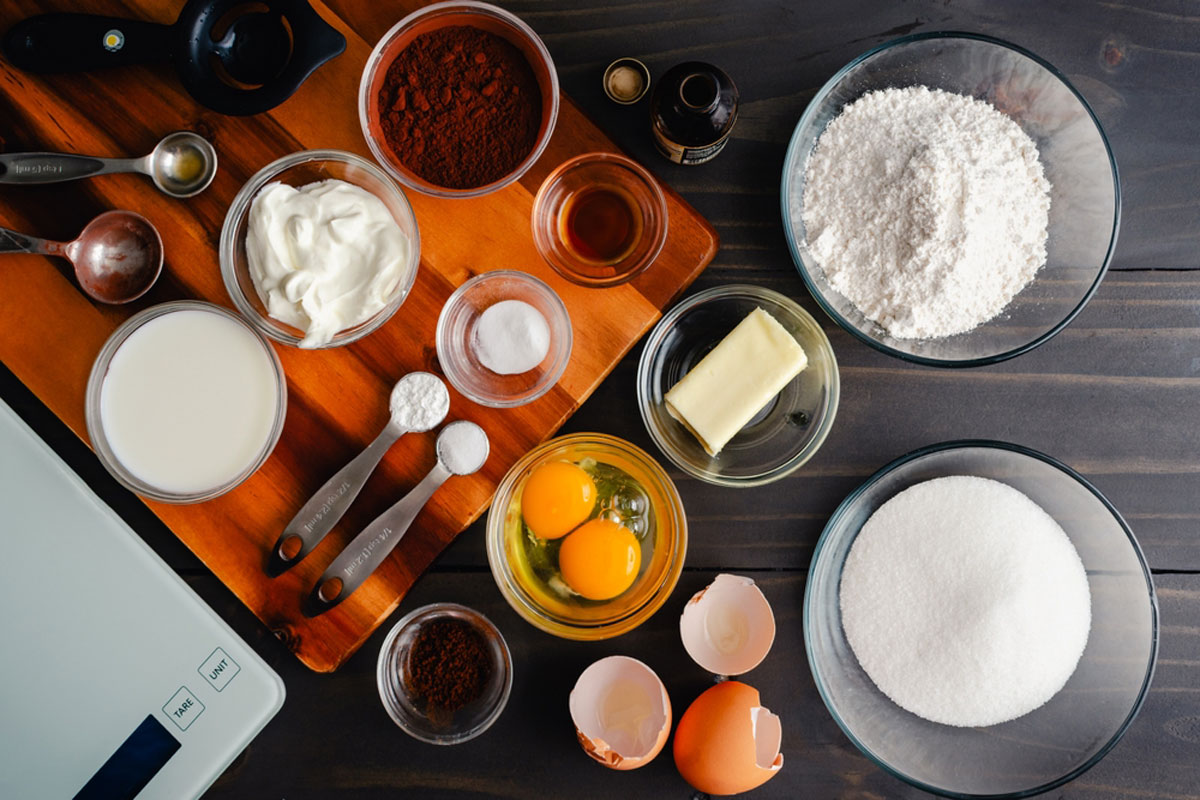Baking is often described as both an art and a science. While the creative side allows for endless innovation, it is the precise interaction of ingredients that transforms a bowl of raw batter into a fluffy cake, chewy cookie, or flaky pastry. Understanding the science behind baking empowers bakers to troubleshoot issues, experiment confidently, and perfect their recipes. Here’s an in-depth look at how the key ingredients in baking work together to create culinary magic.
1. Flour: The Foundation
Flour is the backbone of most baked goods, providing structure and stability.
- Proteins and Gluten: Flour contains proteins (mainly glutenin and gliadin) that form gluten when mixed with water. Gluten creates an elastic network that traps air and supports the structure of baked goods.
- Types of Flour:
- All-purpose flour balances protein content for versatility.
- Bread flour has a higher protein content for a stronger structure.
- Cake and pastry flours have lower protein content, resulting in tender textures.
2. Sugar: The Sweetener and More
Sugar does more than sweeten baked goods—it’s a multitasking ingredient:
- Tenderizing: Sugar interferes with gluten development, creating softer textures.
- Caramelization: During baking, sugar browns, adding flavor and color.
- Moisture Retention: Sugar draws moisture, helping baked goods stay fresh longer.
- Leavening Aid: In recipes with creamed butter and sugar, sugar aerates the batter, contributing to a light and fluffy texture.
3. Fats: The Flavor Enhancers
Fats, such as butter, oil, or shortening, play a crucial role in texture and flavor.
- Tenderizing: Fats coat flour particles, reducing gluten formation for tender baked goods.
- Flavor Carrier: Fats enhance flavor by dissolving and distributing fat-soluble ingredients.
- Leavening Assistance: Creaming butter with sugar incorporates air, providing lift.
- Moisture: Fats contribute to moistness and richness in baked goods.
4. Eggs: The Binders and Leaveners
Eggs serve multiple purposes in baking, acting as binders, leaveners, and emulsifiers.
- Structure: Proteins in eggs set during baking, giving structure to cakes and cookies.
- Moisture: Eggs add liquid to batters, aiding in consistency.
- Leavening: Whipped egg whites trap air, creating light, airy textures in recipes like meringues and soufflés.
- Emulsification: Egg yolks contain lecithin, which helps blend fats and liquids, creating smooth batters.
5. Leavening Agents: The Risers
Leavening agents create the gases that make baked goods rise.
- Baking Soda: Reacts with acidic ingredients (like buttermilk or lemon juice) to produce carbon dioxide.
- Baking Powder: Contains both an acid and a base, releasing carbon dioxide when moistened and heated.
- Yeast: A living organism that ferments sugars, producing carbon dioxide and enhancing flavor over time.
- Steam: High-moisture recipes rely on steam as a natural leavening agent, such as in puff pastry.
6. Liquids: The Activators
Water, milk, and other liquids hydrate dry ingredients and activate chemical reactions.
- Gluten Formation: Liquids combine with flour proteins to form gluten.
- Leavening Reactions: Liquids dissolve leavening agents, initiating the release of gases.
- Moisture Content: The amount of liquid affects the consistency of batters and doughs, influencing the final texture.
7. Salt: The Flavor Enhancer
Salt’s primary role is to enhance flavor, but it also influences the chemistry of baking:
- Flavor Balance: Salt balances sweetness and enhances overall flavor.
- Gluten Control: Salt strengthens gluten structure, improving dough elasticity.
- Yeast Regulation: In yeast-based recipes, salt controls fermentation, preventing over-proofing.
8. Additional Ingredients and Their Roles
- Spices and Extracts: Provide unique flavors without affecting structure.
- Starches (e.g., cornstarch): Used in recipes like shortbread to create a tender, crumbly texture.
- Acidic Ingredients: Buttermilk, vinegar, or citrus juice can enhance flavor, activate baking soda, or tenderize gluten.
- Emulsifiers (e.g., lecithin or soy): Improve texture and shelf life by stabilizing fat and liquid mixtures.
How Ingredients Interact
The magic of baking lies in the way these ingredients work together:
- Butter and Sugar: Creaming incorporates air, which is trapped by gluten during baking.
- Flour and Liquid: Hydration activates gluten, forming a network to support structure.
- Eggs and Heat: Proteins in eggs coagulate, setting the shape of baked goods.
- Leavening and Baking: Gas expansion from leavening agents lifts the batter, while heat sets the structure.
Troubleshooting Common Issues
- Flat Cookies: Check the balance of butter and flour; chilling the dough may also help.
- Dense Cakes: Overmixing or insufficient leavening agents can cause this. Ensure proper creaming of butter and sugar.
- Crumbly Pastries: Too little liquid or overworked dough can lead to a lack of structure.
Conclusion
Baking is a delicate balance of science and creativity. By understanding how ingredients function and interact, you can troubleshoot issues, modify recipes, and achieve consistently delicious results. So, the next time you whip up a batch of cookies or bake a cake, you’ll know exactly how each ingredient contributes to your sweet success!

